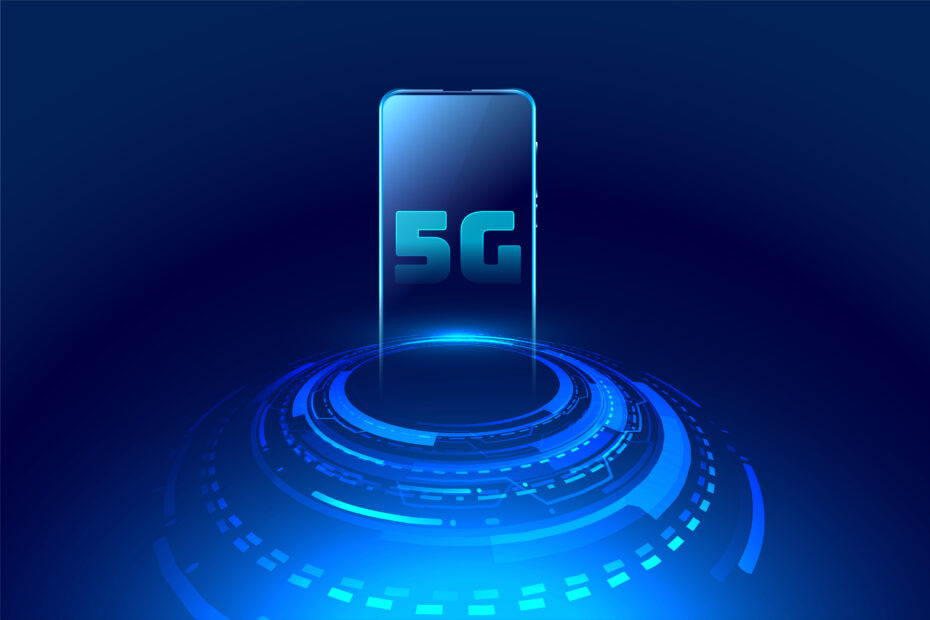Traditionally performance, memory, display, and camera quality have been the major deciding factors for customers looking to purchase a smartphone. However, with the advent of 5G technology, customers are now looking for smartphone models that support 5G. Therefore, if you are looking to join the bandwagon of owning a 5G smartphone, then the following are the 5 points that you should consider.
1. 5G Bands
All the 5G enabled smartphones currently available in the market support NR frequency bands. NR stands for New Radio, a global standard released in the year 2017 for 5G wireless air interface. The 5G NR frequency bands come with the prefix “n”. These bands fall under two ranges –
- Frequency Range 1 (FR1) – It is also known as the Sub 6 GHZ range and it comprises NR frequency bands like n1, n2, n3, n4, etc.
- Frequency Range 2 (FR2) – It is also called the mmWave band that includes a frequency range from 24.25 GHZ to 52.6 GHZ. It comprises NR frequency bands like n257, n258, n260, n261.
Recommendation – It is important to note that the telecom operators in some countries are currently focussing only on a specific set of frequency bands for launching the 5G services. The phone manufacturers are also releasing 5G smartphone models that support a limited number of frequency bands. Therefore, customers currently looking to purchase a 5G smartphone, should check the number of 5G frequency bands the phone supports. The higher the number of frequency bands supported in a smartphone, the more is the chance for the device to connect to a 5G network. Take, for instance, the Indian variant of the popular model OnePlus Nord CE 5G phone supports only one 5G frequency band that is n78. Hence customers in India will get 5G services on the phone only if the telecom operators launch the services in the n78 band.
2. RAM Type
Irrespective of the fact that a phone supports 5G or not, good RAM size is one of the most important deciding factors for selecting a smartphone. For moderate gaming and multimedia requirements, a RAM size of 4GB to 6GB is sufficient. But the point to consider while shortlisting a 5G smartphone is not just the RAM size but the RAM type too. Mobile phones use a type of RAM called the mobile DDR (mDDR) also known as the Low Power Double Data Rate (LPDDR) RAM. 5G services will require a good amount of RAM memory and hence if the type of RAM used in the smartphone is not power-efficient, then it will put a lot of strain on the battery and lead to a faster discharge.
Recommendation – The customers should look for smartphones with RAM types that are power efficient like the LPDDR4X which consumes around 20% less power than the LPDDR4 type of RAM. Similarly, the recently launched LPDDR5 is the fifth generation of mobile RAM technology that consumes 30% less power than the LPDDR4X type. However, the newer varieties of power-efficient RAMs are expensive.
3. 5G Chipset
A chipset is the brain of a smartphone. It is responsible for handling all the major device functions like running various applications, connecting to the cellular networks, executing background tasks and processing images captured by the camera, etc. The major chipmakers like Qualcomm, Mediatek and Samsung have started manufacturing chipsets or SoC (System on Chips) devices that support 5G technology.
Qualcomm has recently launched the Snapdragon 865 series chipset that uses an external modem called the X55 platform to deliver the fastest 5G speeds. This chipset powers mostly the flagship smartphones. For the midrange variety smartphones, Qualcomm has the Snapdragon 765 series chipset which comes with an integrated X52 5G modem. The integrated modems are usually slower than the standalone modems but they consume less power.
Mediatek another popular chipmaker has launched 5G enabled SoC chipsets called the Dimensity 1000 series. These chipsets have integrated modems and are used mostly in flagship devices. For the mid-range smartphones, Mediatek has the Dimensity 700 and 800 series of chipsets.
Samsung also has a series of 5G enabled chipsets that mostly powers its Galaxy phones. For example, the Exynos 9820 chipset is used in the Galaxy S10 5G device and the Exynos 990 series powers the Galaxy Note 20. The newly launched Galaxy S21 Ultra 5G phone uses the Exynos 2100 chipset.
Recommendation – Chipset is an important component of a smartphone. Hence, customers looking for a 5G enabled phone should select a model with a chipset that offers faster 5G speeds and handles power efficiently.
4. Battery Capacity
The 5G services promise faster speeds and a massive amount of data transfer. However, such services will require more power from the phone’s battery. Also if the phone has to frequently switch between 4g and 5G network, then it will lead to a faster battery discharge too.
Recommendation – While selecting a 5G enabled phone, customers should look for models with a good battery capacity and it should last at least a day on a single charge.
5. Wi-Fi 6 Connectivity
Most of the current breed of 5G enabled smartphones conforms to the 802.11 ac standards also known as Wi-Fi 5. But to harness the true capabilities of 5G technology, the support for 802.11 ax or Wi-Fi 6 standards is ideal. Both 5G cellular communication and Wi-Fi 6 can work in tandem to offer seamless and near real-time communication with faster speed and reduced latency.
Recommendation – A smartphone conforming to Wi-Fi 6 standard is a nice-to-have feature.
How to find out Smartphone specifications
One of the ways to check the specification of smartphones is to visit the website GSMARENA. It has information about the specifications of all popular smartphone models. Customers looking to purchase 5G smartphones can visit this website and enter the model name in the search section to check the details.
For more posts on technology, please visit our section Tech Bytes
